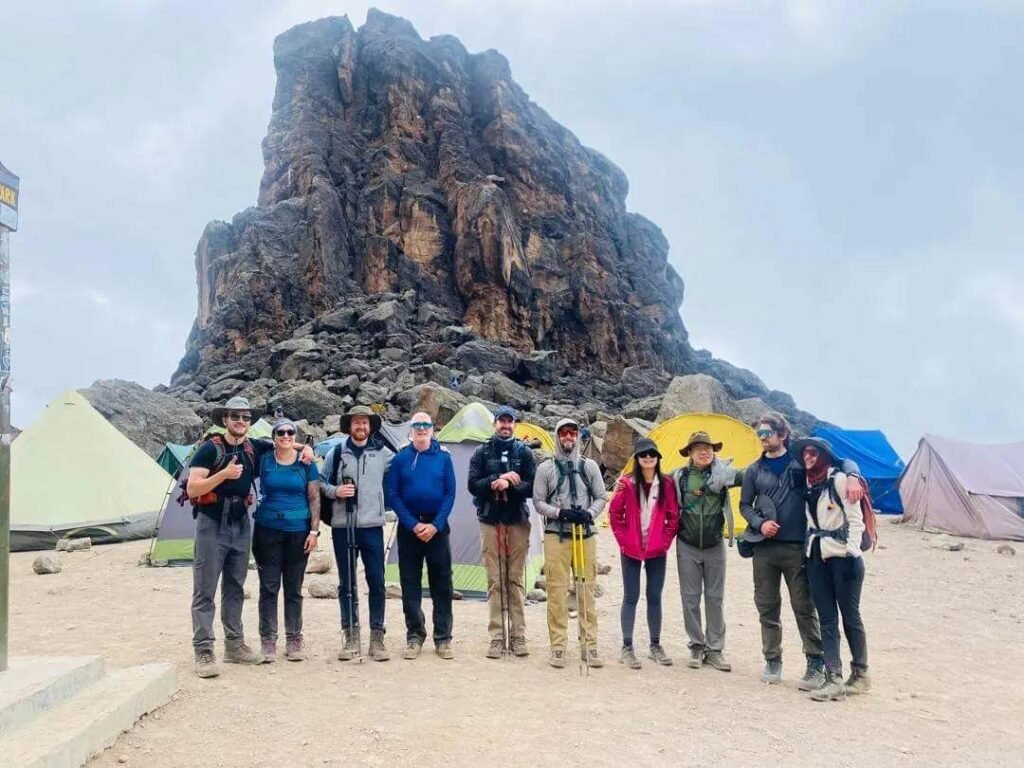Few songs encapsulate the essence of East Africa and the spirit of Mount Kilimanjaro quite like “Jambo Bwana”. This upbeat tune, filled with simple Swahili lyrics and an infectious melody, has become a beloved anthem for both travelers and locals. It embodies the warm hospitality and unity of the region.

Jambo Bwana- eaning, Origins : Meaning and Origins of the Kilimanjaro Song
“Jambo Bwana” translates to “Hello, sir” or “Hello, master” in Swahili. However, the song carries much deeper significance than just a simple greeting. It represents the welcoming spirit, hospitality, and cultural warmth of East Africa. It’s a song of life, unity, and the shared human experience.
The song was originally released in 1982 by the Kenyan band Them Mushrooms, led by Teddy Harrison. The band crafted the song after hearing tourists attempting to speak basic Swahili phrases. Using these simple expressions, Harrison created a song that both celebrated and introduced listeners to the beauty of the Swahili language and culture.
Learn more about Kilimanjaro and East African culture with Kilimanjaro Climb Specialist
Visit Eddy Tours Safaris for unforgettable experiences in Tanzania
Jambo Bwana- eaning, Origins, : Kilimanjaro Song Lyrics and Interpretation
The lyrics of “Jambo Bwana” are both straightforward and profound. They consist of greetings, questions about well-being, and reminders to take life “pole pole” (slowly). It encourages everyone to enjoy the journey and embrace the Swahili philosophy of “Hakuna Matata”—no worries.
While easy to sing along to, the song resonates on a deeper level, reflecting the importance of community, the interconnectedness of humanity, and the shared accomplishment of overcoming challenges. Climbers ascending Mount Kilimanjaro often hear the song sung by guides and porters as a way to motivate and uplift spirits, celebrating milestones along the way.
Discover the spirit of Kilimanjaro trekking with Eddy Tours Safaris
Explore how “Jambo Bwana” is part of Kilimanjaro treks
“Jambo Bwana” Beyond Kilimanjaro
While “Jambo Bwana” has its roots as a song often sung during Kilimanjaro treks, its popularity has expanded well beyond the mountain. It has become a symbol of East African culture, featured in movies, plays, and travel documentaries.
The song’s message of joy, hospitality, and ubuntu (the interconnectedness of all living things) makes it a favorite in East Africa and around the world. Whether in a bustling marketplace, sung around a campfire, or on the slopes of Kilimanjaro, “Jambo Bwana” continues to unite people and remind them to enjoy the simple joys of life.
Learn more about African cultural experiences with Kilimanjaro Climb Specialist
Jambo Bwana- eaning, Origins, : Kilimanjaro Summit Routes
Mount Kilimanjaro offers several routes to reach its summit, each with its own level of difficulty, scenery, and acclimatization opportunities. Here are some of the most popular routes:
1. Marangu Route – The Tourist Route
- Known for its hut accommodations and being a relatively easier ascent.
- Shorter acclimatization period but scenic in its own right.
Read about the Marangu Route in detail
2. Machame Route – The Popular Route
- Offers stunning views and a great balance between scenery and challenge.
- Higher success rate due to better acclimatization periods.
Learn more about the Machame Route
3. Lemosho Route – The Most Scenic (But Most Expensive) Route
- Offers the most beautiful and diverse landscapes on the mountain.
- Longer duration makes it great for acclimatization.
4. Shira Route – Poor Acclimatization Route
- A scenic but more challenging route due to its poor acclimatization schedule.
Find out more about the Shira Route
5. Rongai Route – The Easiest Route
- Less crowded and considered the easiest for ascent, though longer in duration.
Explore details of the Rongai Route
6. Umbwe Route – The Most Difficult Route
- Known as the most challenging route due to its steep ascent.
Discover more about the Umbwe Route
7. Northern Circuit Route – The Longest and Newest Route
- A newer route offering a longer trek and excellent acclimatization.
Learn about the Northern Circuit Route
Find out which Kilimanjaro route suits your adventure with Kilimanjaro Climb Specialist
Jambo Bwana- eaning, Origins, : FAQs
1. What is the meaning of “Jambo Bwana”?
“Jambo Bwana” translates to “Hello, sir” or “Hello, master” in Swahili. However, it symbolizes the welcoming spirit and cultural warmth of East Africa, celebrating unity, life, and shared experiences.
2. Where did the song come from?
The song was released in 1982 by the Kenyan band Them Mushrooms. The band’s leader, Teddy Harrison, wrote the song after overhearing tourists trying to speak Swahili, crafting it to introduce listeners to the language.
3. What do the lyrics of “Jambo Bwana” mean?
The lyrics mix greetings, questions about well-being, and encouragement to take things slowly (“pole pole”) and embrace life without worries (“Hakuna Matata”).
4. Why is the song so popular?
The song’s catchy melody, positive message, and association with Mount Kilimanjaro have made it a favorite. It has become a symbol of East African culture and is often sung during Kilimanjaro climbs, movies, and celebrations worldwide.

Jambo Bwana- eaning, Origins, : Final Thoughts
The song “Jambo Bwana” is more than just a greeting. It’s a song that encapsulates the spirit of Mount Kilimanjaro, the unity of people, and the joy of life. Whether you’re climbing the majestic peak or simply experiencing East African culture, this song serves as a reminder to take life slowly, enjoy the journey, and embrace the warmth of community.
Plan your Kilimanjaro adventure with Kilimanjaro Climb Specialist
Explore East African safaris with Eddy Tours Safaris

